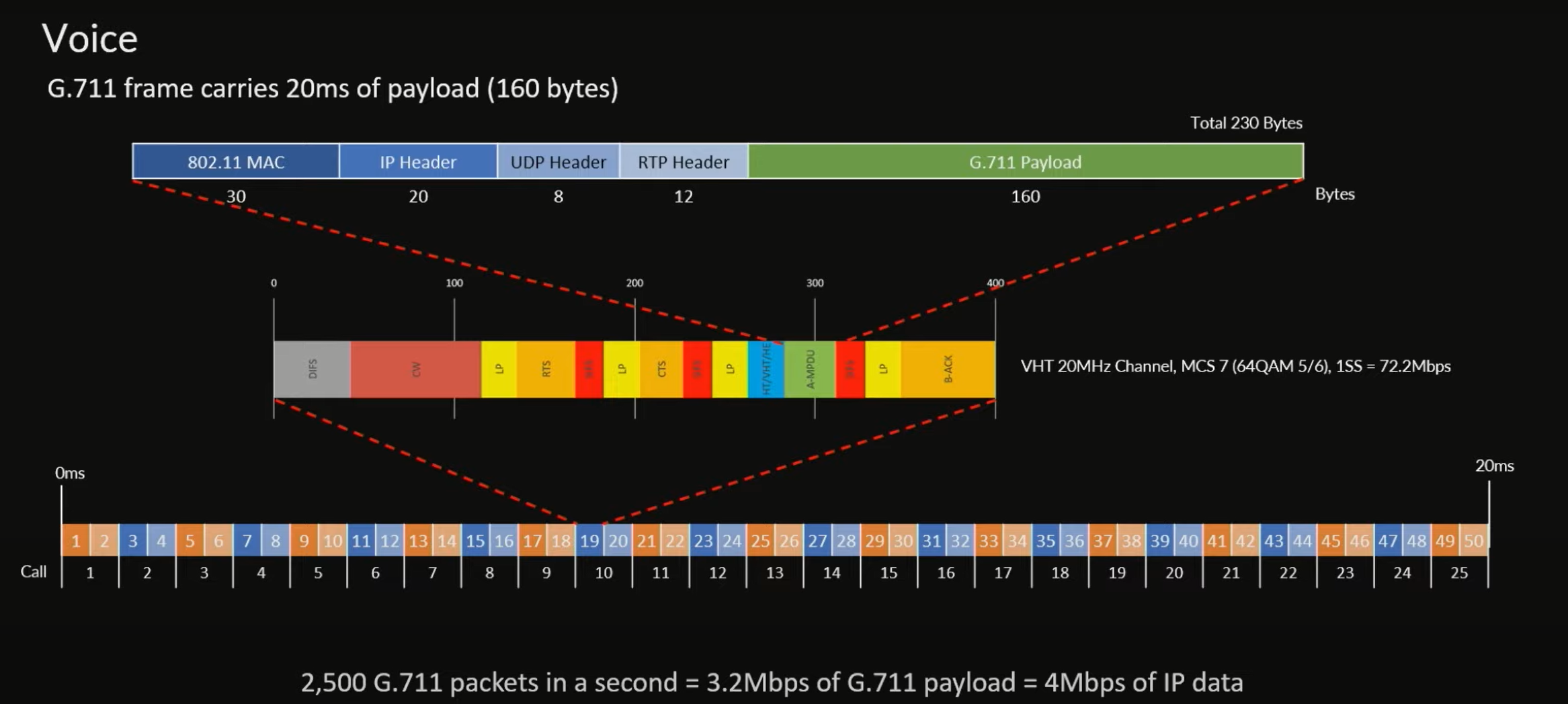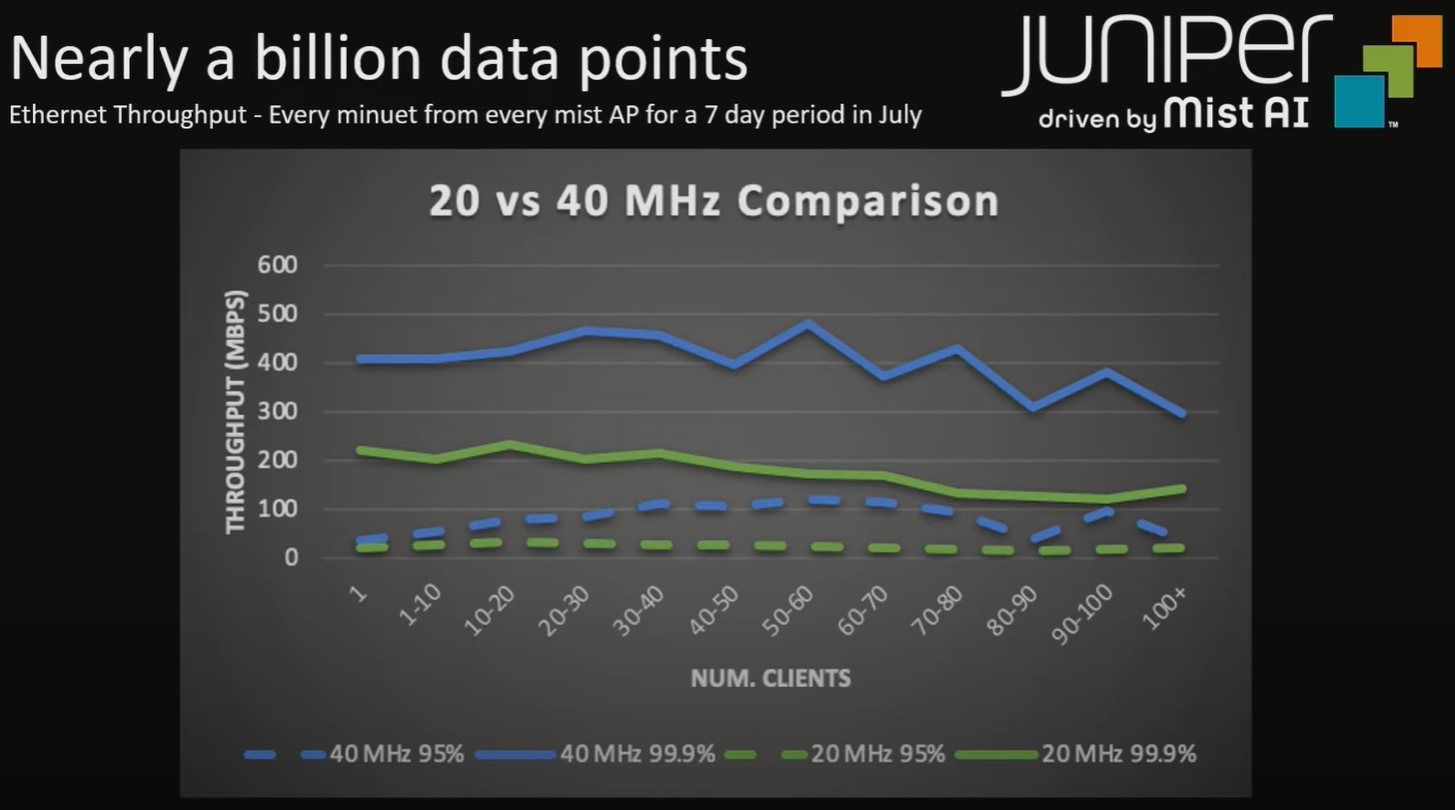Translations: "Italiano" |
Is it possible to calculate Wi-Fi capacity?
Few weeks ago I watched this video on youtube
https://www.youtube.com/watch?v=CZdwHPq-j-Q&ab_channel=WirelessLANProfessionals
If you don't know who Peter Mackenzie is (not the actor) here his site
http://mackenziewifi.com/index.php/about/
In this video I found a lot of important Wi-Fi topics that are often difficult to explain to customers.
So, I decided to summarize it. If you don't have time to watch the video, read this post. But if you have time, I suggest you to watch the video.
In the video, Peter explains why it is impossible to design a wireless network with an arbitrary (and huge) Wi-Fi capacity. But he also explains how to estimate the Wi-Fi capacity of an existing (or simulated) wireless network (or single AP).
Mist AI Wireless Network Design
https://design.mist.com/ interesting site with courses on wireless design
Is the number of Devices important?
Often, in a wireless design the number of devices per user is considered. Peter demystifies this concept. Even if an user can have 3 or 4 devices, there is no difference if I listen the music on the iPhone, write a shared document on a PC and download a file in a tablet or if I do all the activities in a single device. So it is more important how many users I have and the throughput per user instead of number of devices.
The number of devices is important only on very high density environment, when I have to calculate the maximum association capacity of the AP. Usually you should design considering a number of users per APs that is 50% of its maximum capacity.
Design to the customer's requirements...
...but stupid requirements can result in stupid designs.
For ex: put the AP above the ceiling.
No comment is needed here :)
Capacity is limited by the spectrum
It is important to choose requirements that are actually sensible and can be delivered!
Reverse calculation
Instead of reasoning on "I need this capacity, how many APs I need" it is better to reason "I have this number of APS, how much capacity can I have?"
Difference between Wi-Fi Engineers and the others
In a building, for ex. an airport, everyone looks at the phone while Wi-Fi Engineers are always looking up (for APs location).
Human Behavior
It is impossible to account for human behavior.
In every moment we can't estimate how many clients are active and how much traffic are generating.
So, on design phase we can account the throughput on worst (feasible) case scenario (for ex. in auditorium of 300 hundreds people, 3/4 will use Wi-Fi at the same time)
Airtime calculator
At this link, an airtime calculator is available https://gjermundraaen.com/thewifiairtimecalculator/.
Even with calculator, airtime (and so capacity) is not 100% accurate.
Indeed, for every transmission packet there are random values that influence airtime, for ex. random backoff timer on contention window.
From calculator, we can estimate the best (smallest), the average and the worst (longest) duration time.
Voice packet example
Let's see now an example. Let's consider a packet that is transmitted in a VHT 20Mhz Cannel, MCS 7, 1SS = 72.2Mbps nominal datarate.
The packet is a voice G.711 frame, that carries 20ms of payload (160 bytes). The Wi-Fi packet is 230 Bytes.
Using calculator, the total airtime for the packet is 400 microseconds.
Considering that for every client, I transmit one packet every 20 ms and I receive one packet every 20 ms. So in a time window of 20 ms the channel can handle 25 clients (voice) at the same time.

voice_packet
Calculating maximum throughput of the AP with 25 voice clients and MCS7 datarate, I have a maximum throughput of 4 Mbps. Indeed, If I can transmit 50 packets of 160 Bytes in 20 ms, it means I can trasmit 2500 G.711 frames in a second, that is 160*2500 = 3.2 Mbps og G.711 payload = 4 Mbps of IP data.
So the maximum capacity/throughput of the AP depends also on the make up of the packets and size.
Ethernet Throughput
Let's take a look at the video from minute 39 because I am not able to explain this part (and I am sorry for that), but there are valuable measured datas of Ethernet throughput of APs. Below I insert only the image, for explanation look at MacKenzie video :)

eth_throughput
Conclusion
Let's conclude with a motto
Wi-Fi design is as much of an art as it is a science